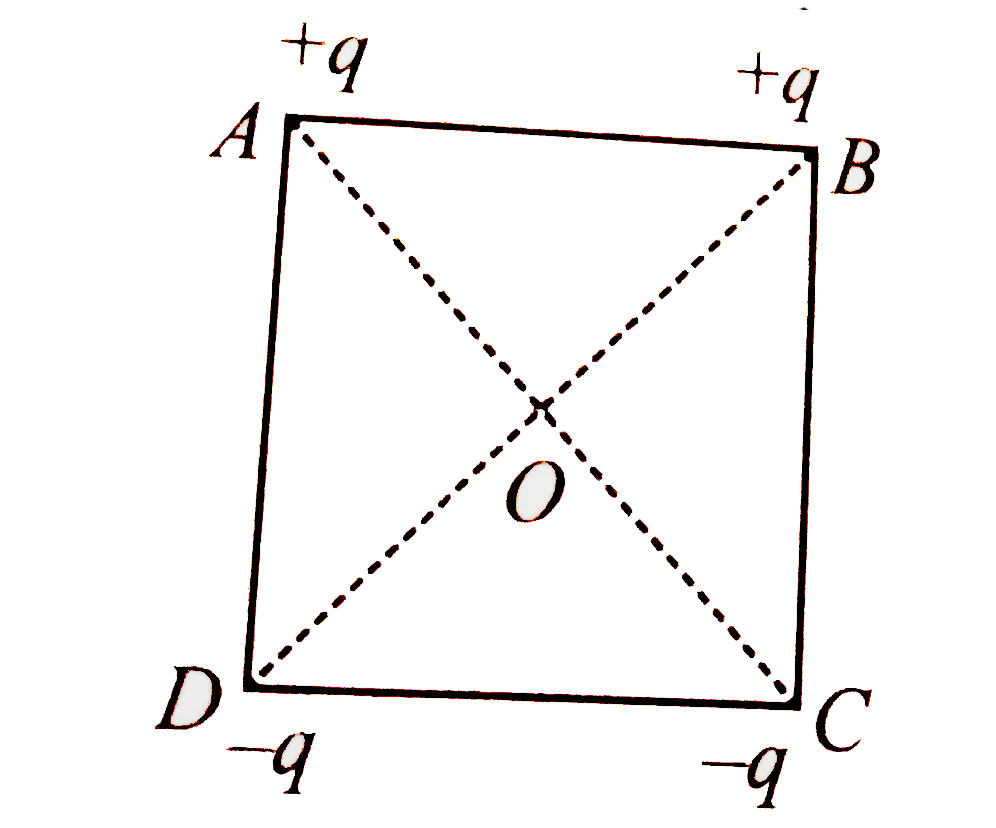Four charges are arranged at the corners of a square ABCD, as shown. The force on a =ve charge kept at the centre of the square is -

Zero
along diagonal AC
along diagonal BD
perpendicular to the side AB
The correct Answer is:D
(##NGPHYC01E01004_S01.png width=80%><br> vec E_A + vec E_C = willbealongOA<br> vec E_B + vec E_E = willbealong OB<br> | vec E_A | vec E_C |= | vec E_B + _D|<br>SoE_owillbeperpendica––r→s AB.
Similar Questions
Four point charges are placed at the corners of a square ABCD of side 10 cm, as shown in figure. The force on a charge of 1μC placed at the centre of square is

View SolutionFour point charges qA=2μC,qB=−5μC,qC=−2μCandqD=−5μC are located at the corners of a square ABCD of side 10 cm. What is the force on a charge of 1μC placed at the center of the square ?
View Solution
Knowledge Check
Four charges are arranged at the corners of a square ABCD, as shown. The force on a positive charge kept at the centre of the square is
 AzeroBalong diagonal ACCalong diagonal BDDperpendicular to the side AB
AzeroBalong diagonal ACCalong diagonal BDDperpendicular to the side ABFour charges are arranged at the corners of a square ABCD as shown in the figure. The force on the charge kept at the ccentre O is
 Aalong the diagonal BDBalong the diagonal ACCzeroDperpendicular to side AB
Aalong the diagonal BDBalong the diagonal ACCzeroDperpendicular to side ABFour charges are arranged at the corners of a square ABCD as shown in the figure. The force on the charge kept at the centre O will be:
 Aperpendicular to side ABBalong the diagonal BDCalong the diagonal ACDzero
Aperpendicular to side ABBalong the diagonal BDCalong the diagonal ACDzero
Four charges are arranged at the corners of a square ABCD as shown in the figure. The force on the charge kept at the centre O will be:

View SolutionFour charges are arranged at the corners of a square as shown in the figure. The direction of electric field at the centre of the square is along

View SolutionFour charges are arranged at the corners of a square ABCD, as shown in the adjoining figure, The force on a positive charge kept at the centre O is

View SolutionFour charges Q-Q, Q-Q are placed at the corners of a square as shown . The potential is zero at points

View SolutionFour positive charges (2√2−1)Q are arranged at the four corners of a square. Another charge q is placed at the center of the square. Resulting force acting on each corner charge is zero if q is
View Solution

